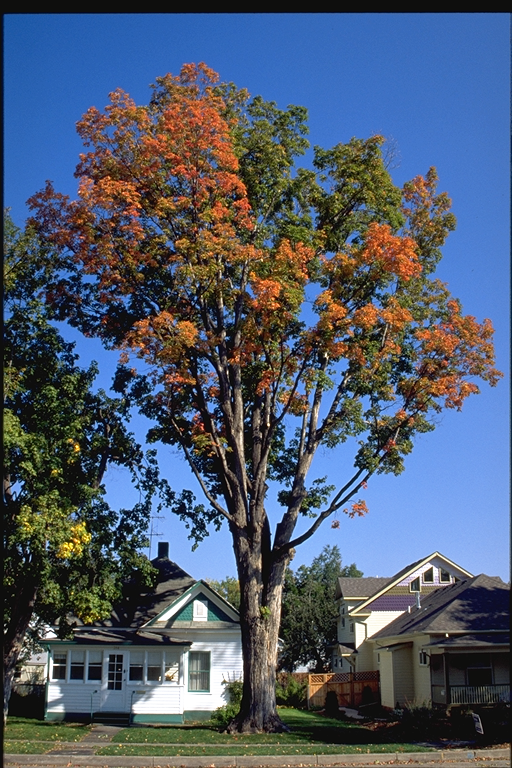sugar maple (Acer saccharum)
Sugar maple in Fort Collins.
Species info:
Leaves: Opposite, simple, 3–5 lobed; medium to dark green in summer, turning brilliant yellow, orange, or red in fall
Leaflets: N/A (simple leaves)
Leaf Surface: Smooth and glossy on top, lighter green beneath
Bark: Smooth and gray-brown when young; becomes rough, deeply furrowed, and broken into irregular thick plates with age
Flowers: Small, greenish-yellow, and inconspicuous; appear in early spring before or with the leaves
Fruit: Paired winged samaras
Botanical: Acer saccharum
Family: Sapindaceae
Mature Height: Typically 60–75 feet; occasionally up to 120 feet in ideal conditions
Canopy Spread: About two-thirds of the height (40–50 feet average)
Foliage Type: Deciduous
Tree Shape: Broadly oval to rounded crown with dense foliage; strong central trunk
Flowers: Inconspicuous
Fruit: None
Fall Color: Brilliant and variable—can range from yellow to burnt orange to deep red
Water Use: Moderate; prefers moist, well-drained soils; sensitive to drought and pollution
Hardiness: Zones 4–8 (some cultivars tolerate heat up to Zone 8)
Soil Preference: Moist, rich, well-drained, slightly acidic soils; does not tolerate compacted or salty soils
Wildlife Value: Provides nectar for pollinators; seeds eaten by birds and small mammals
Pests/Pathogens: Generally healthy; may suffer from leaf scorch and Verticillium wilt under drought stress or poor soil conditions
Notable Traits: Iconic shade and lawn tree known for spectacular fall color; long-lived and strong-wooded; best suited for spacious, low-pollution environments
Planting recommendation: Recommended for most sites, but in protected sites
Information Sources:
Dirr, Michael Dr., "Manual of Woody Landscape Plants," 1998


